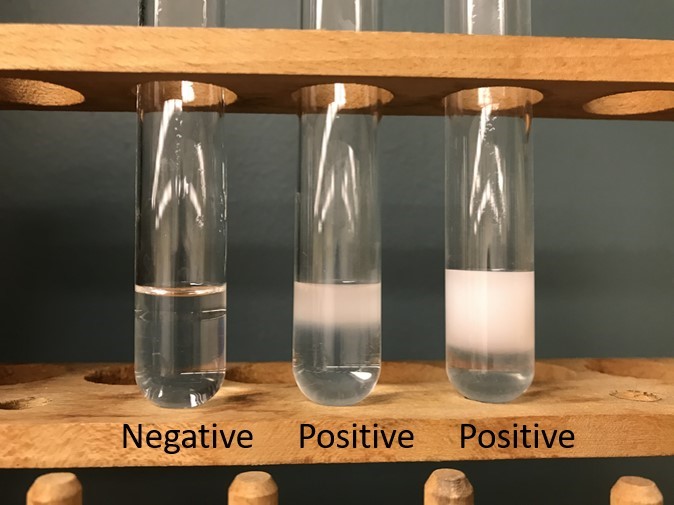Emulsion TestDr. Brown explains that this procedure tests for the presence of fats. She goes on to add that the emulsion test can be used to detect lipids in biological samples, which can be important for diagnosing conditions like hyperlipidemia.
You take this opportunity to revise this test from your Biology lab notes and note the following procedure: 1. 2mL of ethanol is added to 1mL of the sample in question (olive oil in your experiment). 2. 2mL of cold water is added. 3. The solution is mixed vigorously and observed for any changes. 4. The formation of small droplets or globules of fat in suspension indicates the presence of fats. These droplets give a milky appearance, as shown in the image below. The left test tube indicates a negative ethanol emulsion test and the right two tubes indicate a positive one. The formation of droplets and globules is due to hydrophobic interactions with water.
You also decide to watch a video to further help your understanding. Dr. Brown asks you to reconsider your answer. |
Map: CS5 - BIOMOLECULES (992)
|
||
|
Review your pathway |
